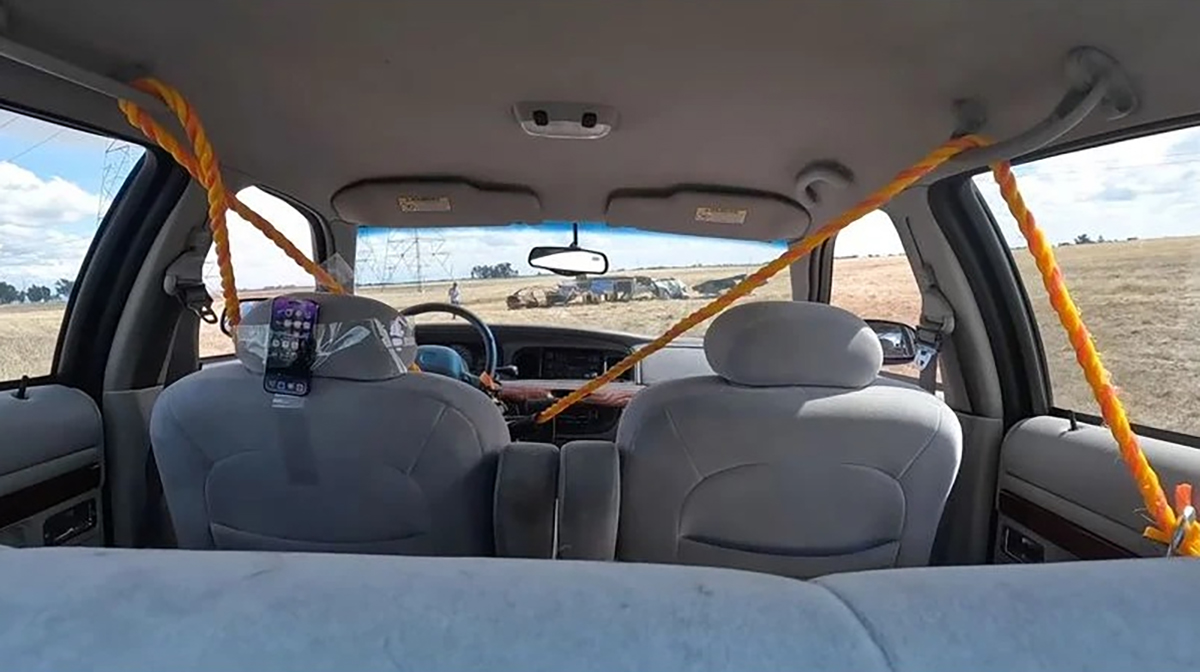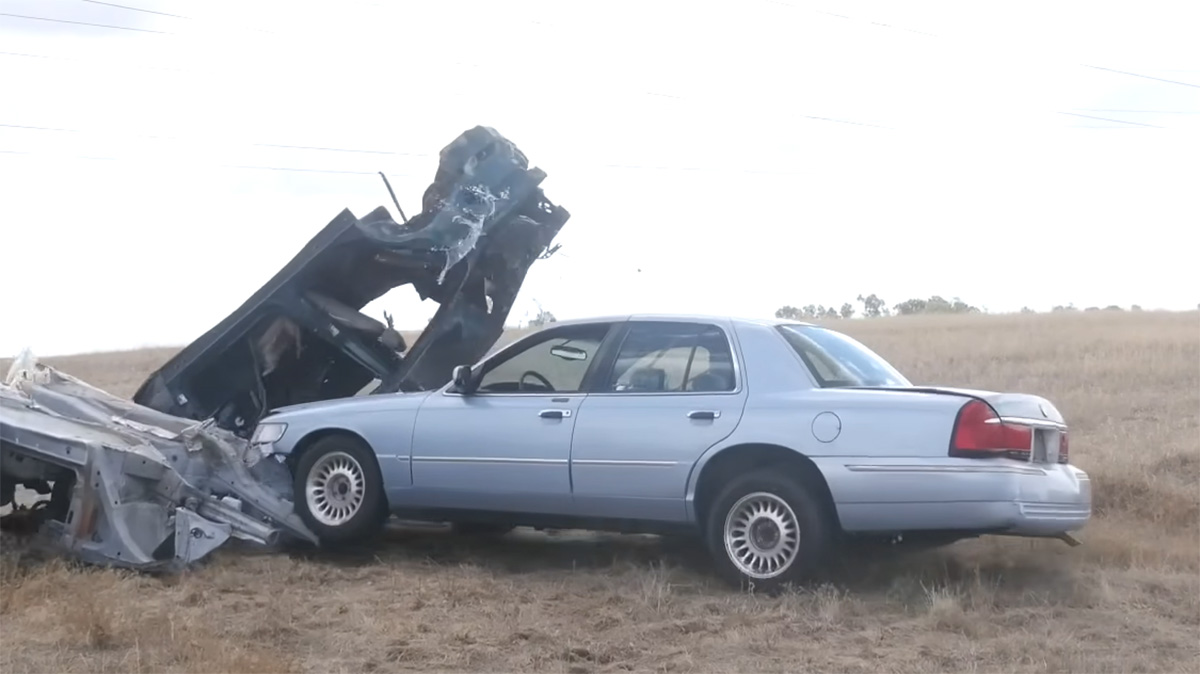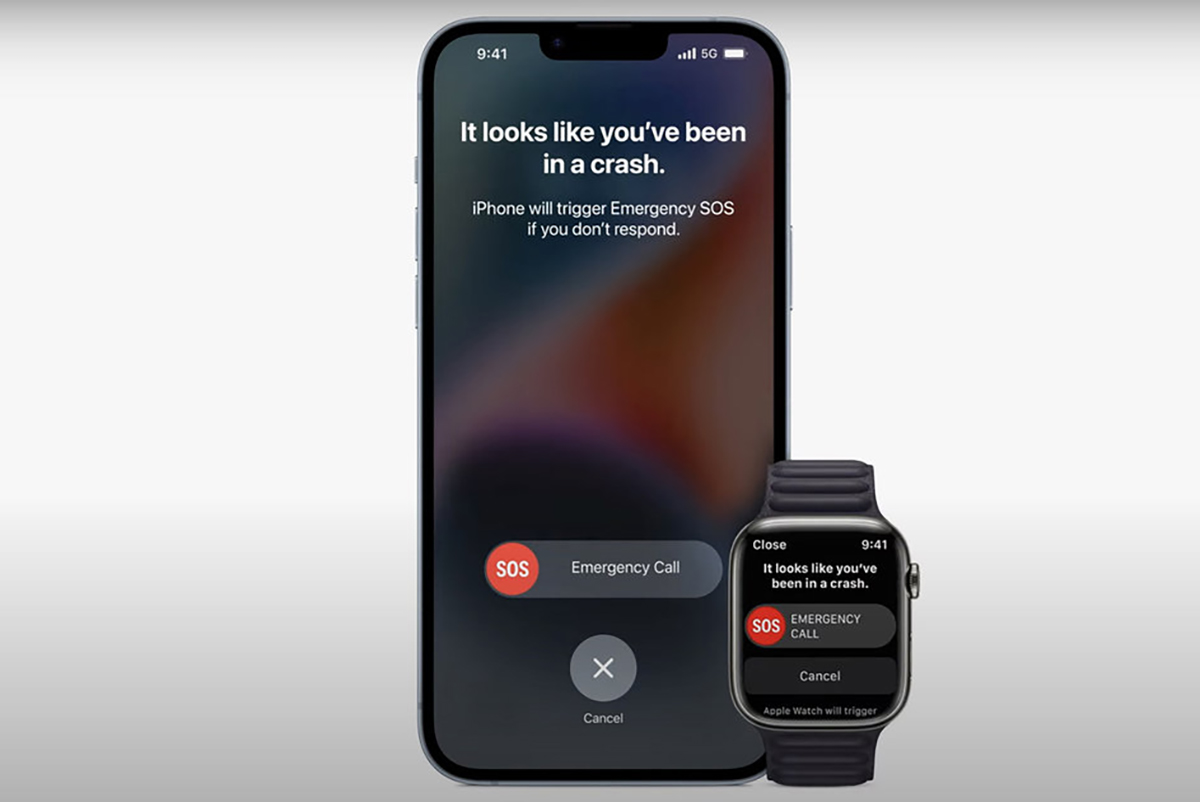For the test, YouTuber TechRax and his team have somehow rigged a car so that its accelerator can be activated remotely, though it could only move forward as there’s no way for them to control its steering. Not wanting to have an actual person involved in the crash, the team attached an iPhone 14 Pro to the back of the front passenger seat while a GoPro is installed in the back to document the entire experiment. As you’d expect, the whole idea is to have the car collide into a set of wrecked vehicles to see whether this would trigger the phone’s Crash Detection feature. Of course, the inability to steer the vehicle did result in TechRax and team conducting several tries and setups before they managed to pull off two “successful” crashes. The first time attempt managed to activate the feature, but not after what appears to be a short delay. It is unclear whether this is by design or an overlooked flaw from Apple, as the promotional video shown during the company’s Far Out event suggests that Crash Detection would trigger immediately after a collision. The second time around saw the feature triggered almost immediately, though it did take a while for the team to retrieve the iPhone 14 Pro as the car had wedged between two of the wrecked vehicles used for the test. Additionally, the phone could also be heard omitting a loud alarm when its emergency SOS countdown timer passes the five second mark. For the uninitiated, this particular function on the iPhone 14 series as well as this year’s Apple Watch models (Series 8, Ultra, and SE) will automatically send out an SOS call to registered emergency services after 10 seconds if the user does not respond to the on-screen prompt. On that note, TechRax and team managed to successfully cancel the feature during both attempts. As proven by the YouTuber, the Crash Detection feature appears to work as intended, at least for the iPhone 14 Pro. Hopefully this insight is more than enough to assure both current users and would-be owners of Apple’s current generation smartphones and watches of the built-in ability, as well as preventing them from doing anything reckless just to test its reliability. While TechRax’s experiment did not involve anyone driving the car and was conducted in a seemingly isolated location, we strongly advise our readers not to imitate such attempts as it could still endanger unsuspecting bystanders and/or cause damage to public property. Also not forgetting the fact that triggering the SOS call irresponsibly would only cause inconvenience to first responders when there’s no actual emergency occurring. (Source: TechRax, via MacRumors)


